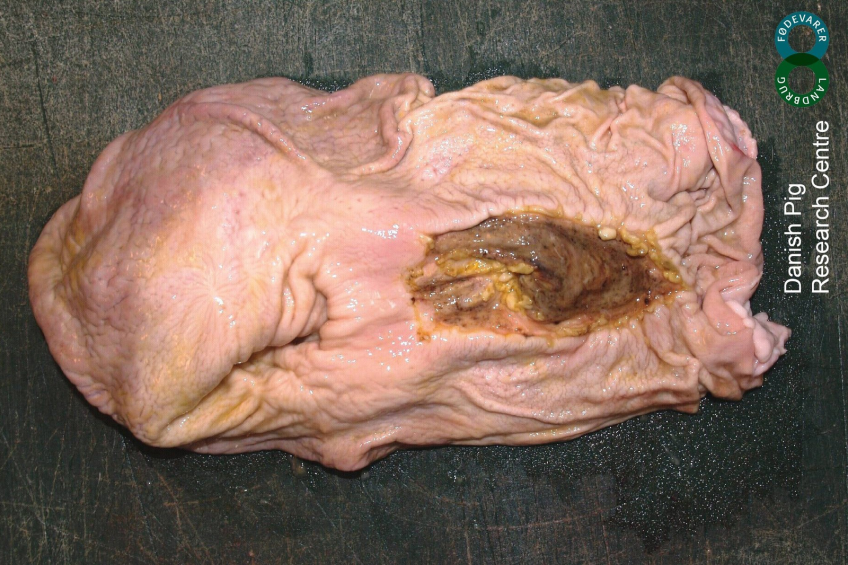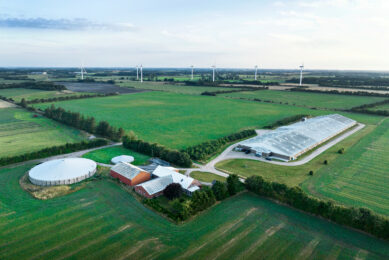Gastric ulcers in pigs: A challenge for Denmark

For several years, Danish researchers have focused on gastric ulcers in pigs and how to avoid it. One of the latest trials zoomed in on using hemp in feed rations. Meal feed, however, still appears to be the best strategy.
A press release from Aarhus University states that studies from 2013 demonstrate that gastric changes and ulcers occur in about 30% of finishers and 50% of sows in Denmark. Gastric ulcers may cause increased mortality rates and reduced growth in finishers, and also constitute economic and animal welfare production problems. This caused the Danes to address the issue of gastric ulcers more strongly ever since.
Research efforts to prevent ulcers
Since 1998, the Department of Animal Science at Aarhus University has contributed research efforts, e.g. in cooperation with the Danish Pig Research Centre, in relation to the effect of feed grinding and processing, feed composition and feed supplementation on gastric health and the prevalence of ulcers.
Based on this it has been shown that gastric ulcers may be prevented by feeding the pigs coarsely ground feed instead of finely ground or pelletised feed, but however, this may reduce feed utilisation and increase feed costs significantly.
In addition to the effect of feed structure, research demonstrates that a permanent allocation of straw may reduce the prevalence of gastric ulcers, but it may be difficult for pig producers to manage the amount of straw.
Using hemp to fight gastric ulcers
The press release points to a recently finished research project – financed by the Pig Levy Fund and carried out by Aarhus University, the Danish Pig Research Centre and the company Nørding – aimed at procuring an application-oriented strategy to help the farmer identify gastric ulcers in his herd and also to solve the problem by using an old cultivated plant (hemp) in crop rotation.
The pig model established in the project demonstrated a significant accordance between endoscopy examinations performed on a live pig and the clinical examination of the pig’s gastric health after removing the gut.
Adding hemp shells to pelletised feed
In addition, the examination showed a marginal effect on the prevention of gastric ulcers when adding hemp shells to pelletised feed. A supplementation of 4% hemp cakes to pelletised feed did not prevent the occurrence of gastric ulcers when compared to feeding pelletised feed alone.
Based on a metabolomics analysis of saliva samples extracted the day before slaughter, it was possible to distinguish pigs diagnosed with severe gastric ulcers from pigs that did not have ulcers.
Increased inflammation discomfort
Analyses of the tissue close to the ulcer showed increased inflammation discomfort in pigs with severe ulcers; however, inflammation markers in manure samples extracted before slaughtering did not distinguish between pigs with severe ulcers and pigs without ulcers.
The results will be presented at e.g. the EAAP conference in Belfast, United Kingdom, later this year.
More knowledge on pathogenesis of gastric ulcers
In order to strengthen the efforts to prevent and heal gastric ulcers without compromising feed utilisation further knowledge is needed on the pathogenesis of gastric ulcers, including the importance of risk factors and an understanding of the mechanisms involved. This knowledge will be procured by means of a knowledge synthesis which shall be published later this year.
The conclusion of the research efforts in this area so far, is that meal feed seems to be the best strategy in order to prevent gastric ulcers in pigs.











